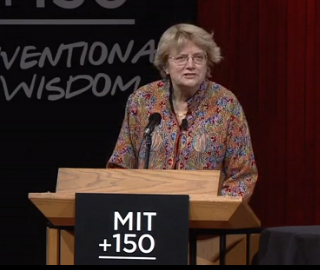Women and Leadership: Why the Pipeline Leaks
-
-
slice.mit.edu
Filed Under
Recommended
Her 41-minute keynote at the Leaders in Science and Engineering: The Women of MIT Symposium, held March 28-29 on campus, identified sexual harassment and lack of mentoring as factors that cause leaks in the pipeline of women who are qualified to hold top academic posts.
Hopkins noted that until the 1960s there were virtually no women faculty because of a widespread cultural bias against hiring women. Nobel laureate Barbara McClintock could not get a faculty job in the 1940s—except in home economics departments—even though she was the top scientist in her field.
“We think of science as a meritocracy and to a great degree it is, but Barbara McClintock’s story shows that society beliefs can overpower merit. You could be the best in the world and still not be hired.”
The passage of civil rights law, federal affirmative action guidelines, and the women’s movement in the 1960s finally spurred academic institutions to hire women. At MIT by 1970 there were two women faculty in science and engineering and that moved up to 10 women by 1973 and then pancaked for a decade. More work was needed, she noted:
“In retrospect, it’s very obvious that not being able to get a job is a serious barrier to women’s advancement. Equally clear is that the early ’70s was a turning point that threw open the doors of universities and other workplaces to women. But what... has taken us nearly 50 years to understand is that...there were a series of obstacles to women’s advancement that were unanticipated and largely invisible. Furthermore, some of these obstacles were almost as effective at excluding women as the fact that they couldn’t get a job at all. It turns out that identifying these invisible gender based obstacles and removing them takes about 30 years. When you realize it wasn’t just one of them but several, it’s easy to see why the pipeline leaked and why women’s progress to the top has been so slow.”
Watch videos of Hopkins’ keynote and the other sessions for more.N.B. The Wikipedia entry on sexual harassment recounts MIT ombudsperson Mary Rowe’s role in defining and fighting it.








